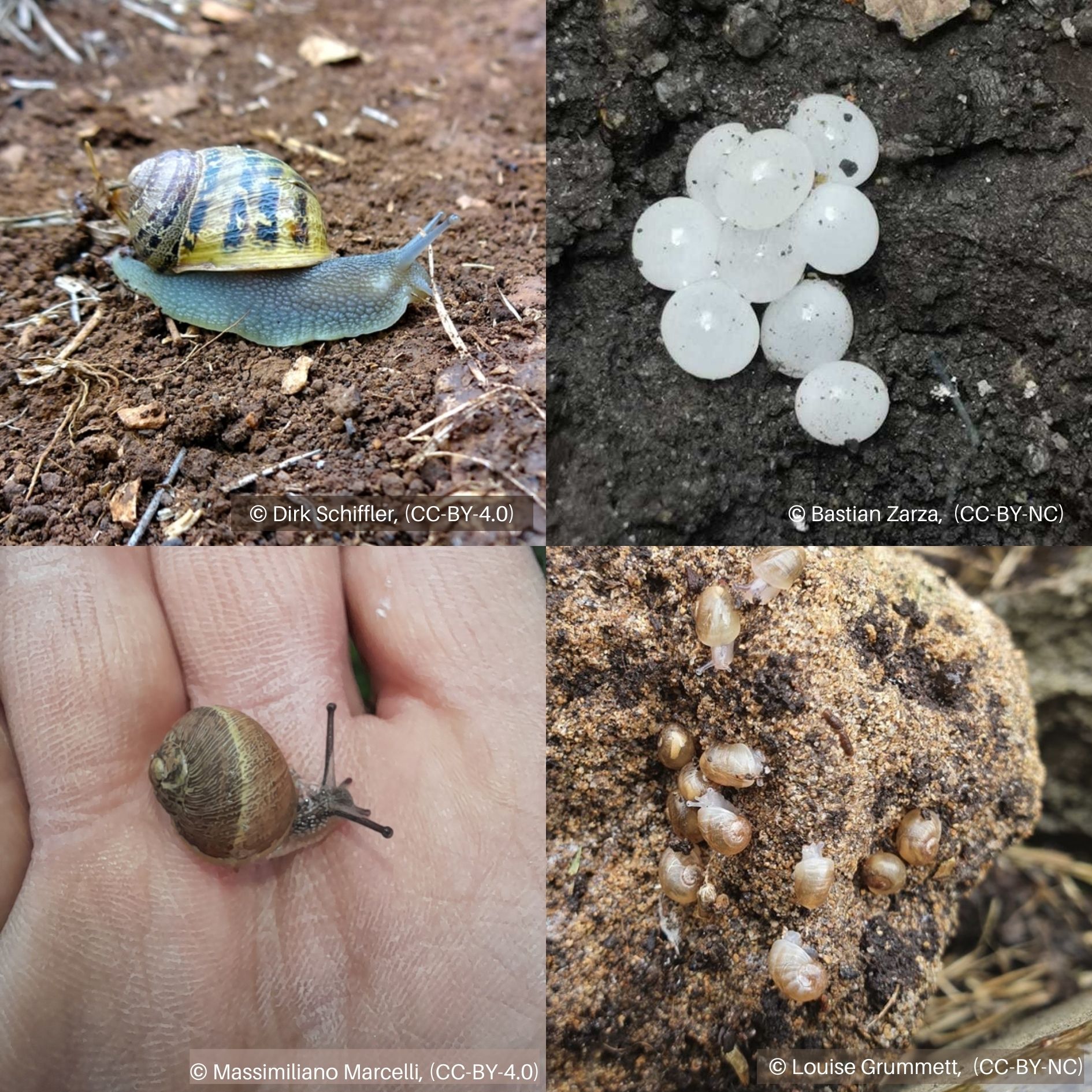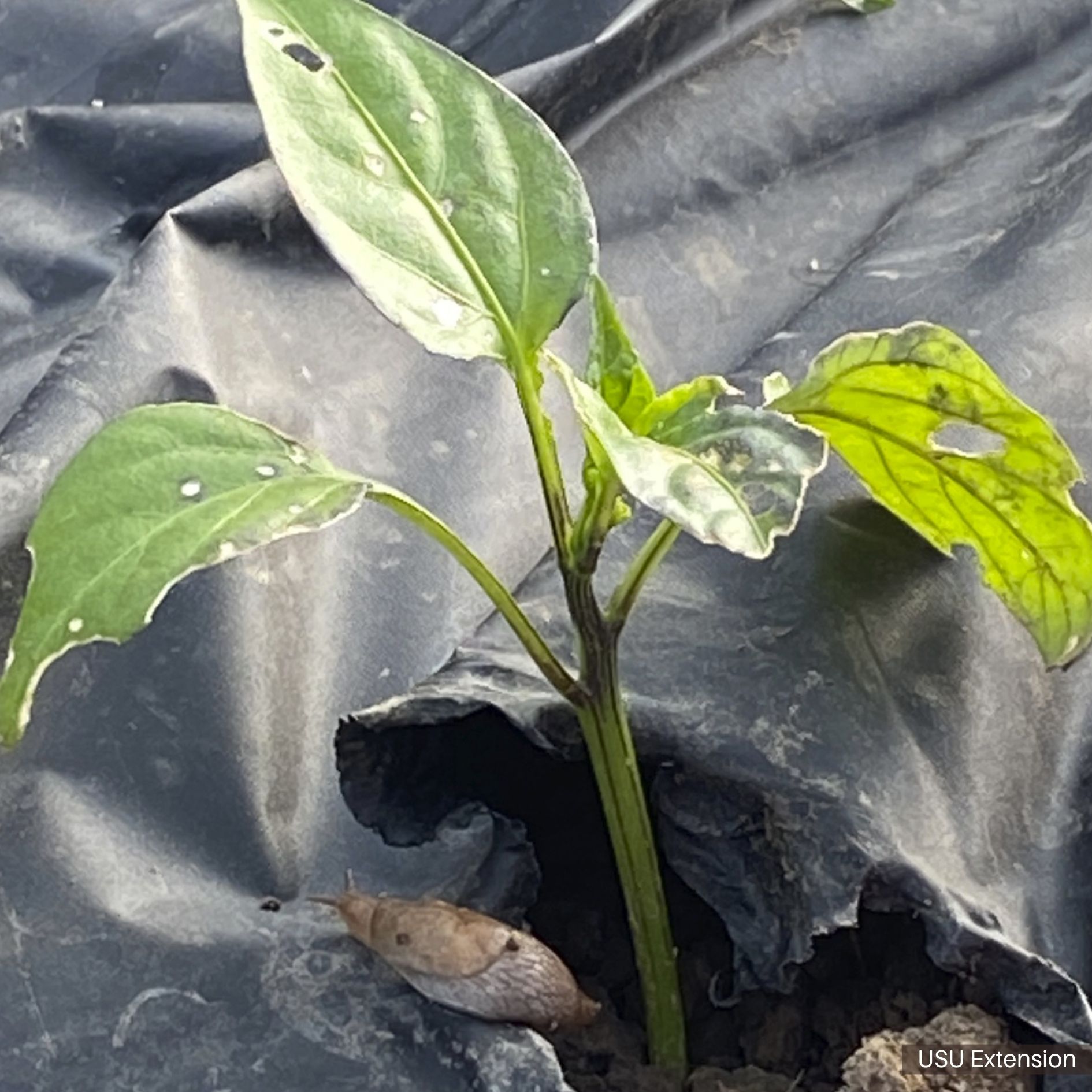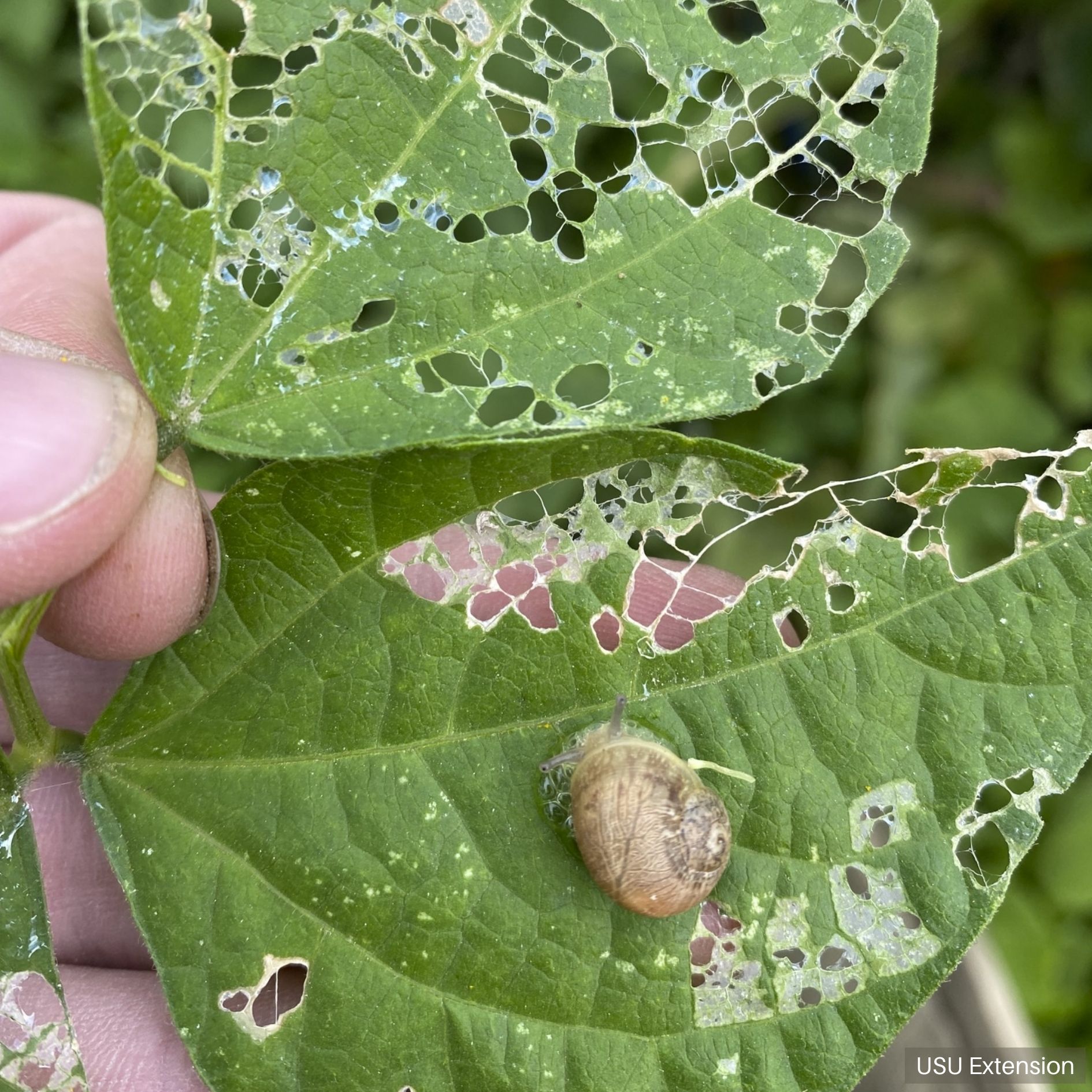Slugs and Snails
 Snail Life Stages
Snail Life Stages Slug Feeding Damage on Pepper Plant
Slug Feeding Damage on Pepper Plant Snail Feeding Damage on Bean Plant
Snail Feeding Damage on Bean Plant Slug Feeding Damage on Ornamental Plant
Slug Feeding Damage on Ornamental PlantHOSTS
- Artichoke
- Brassicas
- Corn
- Cucurbits
- Leafy Greens
- Legumes
- Ornamentals
DESCRIPTION
Slugs and snails have similar characteristics except snails have an external, spiral shell. Both glide with a long, flat, muscular organ called a foot. Mucus or slime secreted by the foot aids in locomotion and dries to form a shiny white silvery trail, indicating that the pests are present.
BIOLOGY
These creatures are hermaphrodites, meaning they are not male and female but all are capable of reproducing. They can lay multiple clusters of eggs throughout the growing season. These resemble small, white pearls about 1/8 inch in diameter. Depending on the species, there are 3 to 40 eggs in each cluster.
These pests are active at night or on dark, cloudy days. During the day they seek relief from the sun and heat in shade under plants, rocks, wood, or compost piles. They need moisture to thrive but survive in reasonably dry conditions by hiding in protected areas.
SYMPTOMS
- Slugs and snails feed on a wide variety of living plants, on fungi and decaying plant materials. They are particularly damaging to new seedlings and maturing vegetables or fruits that touch the soil.
- They chew irregular holes that have smooth edges in leaves. They eat flowers and clip off small plants and plant parts. They damage strawberries, tomatoes, basil, lettuce, beans, cabbage and many other vegetables.
GENERAL MANAGEMENT
- Water management is critical. Stretch irrigation intervals as long as possible and avoid watering in protected hiding areas if there are no plants there. Drip irrigation is one way of reducing the available moisture and can also help reduce problems with these pests.
- Slugs and snails avoid irritating barriers. Numerous barriers are recommended but barriers only work if slugs and snails have other desirable places to feed or hide. Mesh copper screens or sheeting 8 inches wide make effective barriers.
- Traps are an effective method of controlling the pests.
- Place bait stations in strategic spots which will be more efficient and effective since slugs and snails are attracted to bait several feet away.
- Natural enemies, including geese, ducks and other birds, seek out and destroy slugs and snails.

